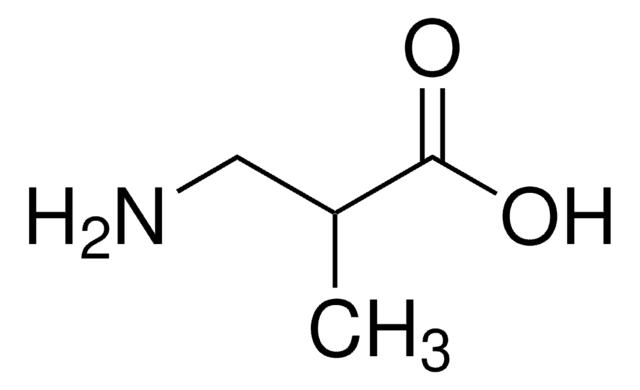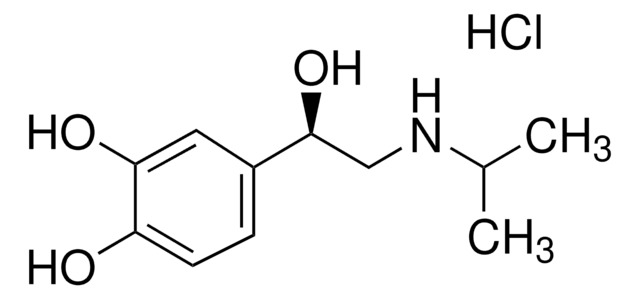M3668
Metergoline
Synonyme(s) :
N-CBZ-[(8β)-1,6-Dimethylergolin-8-yl]methylamine, [(8β)-1,6-Dimethylergolin-8-yl)methyl]carbamic acid phenylmethyl ester
Sélectionner une taille de conditionnement
Sélectionner une taille de conditionnement
About This Item
Produits recommandés
Niveau de qualité
Pf
148-150 °C (lit.)
Solubilité
0.1 M HCl: 1.4 mg/mL
ethanol: 4 mg/mL
H2O: insoluble
Température de stockage
−20°C
Chaîne SMILES
[H][C@]2(CNC(=O)OCc1ccccc1)CN(C)[C@]3([H])Cc4cn(C)c5cccc(c45)[C@@]3([H])C2
InChI
1S/C25H29N3O2/c1-27-14-18(13-26-25(29)30-16-17-7-4-3-5-8-17)11-21-20-9-6-10-22-24(20)19(12-23(21)27)15-28(22)2/h3-10,15,18,21,23H,11-14,16H2,1-2H3,(H,26,29)/t18-,21+,23+/m0/s1
Clé InChI
WZHJKEUHNJHDLS-QTGUNEKASA-N
Informations sur le gène
human ... HTR1A(3350) , HTR1B(3351) , HTR1D(3352) , HTR1E(3354) , HTR1F(3355) , HTR2A(3356) , HTR2B(3357) , HTR2C(3358) , HTR7(3363)
rat ... Htr7(65032)
Vous recherchez des produits similaires ? Visite Guide de comparaison des produits
Application
Actions biochimiques/physiologiques
Mention d'avertissement
Warning
Mentions de danger
Conseils de prudence
Classification des risques
Acute Tox. 4 Dermal - Acute Tox. 4 Inhalation - Acute Tox. 4 Oral
Code de la classe de stockage
11 - Combustible Solids
Classe de danger pour l'eau (WGK)
WGK 3
Équipement de protection individuelle
dust mask type N95 (US), Eyeshields, Faceshields, Gloves
Faites votre choix parmi les versions les plus récentes :
Déjà en possession de ce produit ?
Retrouvez la documentation relative aux produits que vous avez récemment achetés dans la Bibliothèque de documents.
Active Filters
Notre équipe de scientifiques dispose d'une expérience dans tous les secteurs de la recherche, notamment en sciences de la vie, science des matériaux, synthèse chimique, chromatographie, analyse et dans de nombreux autres domaines..
Contacter notre Service technique









